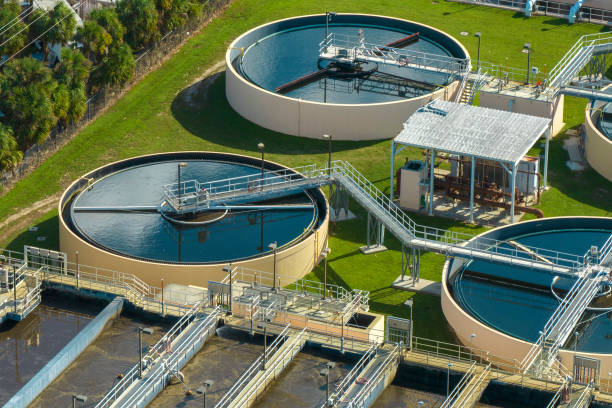
Introduction
As global urban populations rise, wastewater management becomes an increasingly critical issue for public health, pollution control, and environmental protection. Traditional sewage systems are often unsustainable, struggling with challenges such as climate change, population growth, and environmental degradation.
The push for sustainable urban sewage systems is stronger than ever, focusing not just on wastewater treatment but also on resource recovery, energy efficiency, and community well-being. This article explores the principles of sustainable sewage development, highlighting innovative technologies, modern urban planning, and future trends in wastewater management – with examples from Australia.
What Are the Sustainable Development Goals for Wastewater Treatment?
The United Nations Sustainable Development Goals (SDGs) emphasize water and sanitation as essential for sustainable living. Urban sewage systems play a key role in meeting several of these goals:
SDG 6 – Clean Water and Sanitation
Sustainable wastewater treatment ensures safe water for ecosystems and communities by reducing contamination and promoting water reuse.
SDG 12 – Responsible Consumption and Production
Municipalities adopting resource-efficient sewage systems can reduce water consumption and recover valuable resources.
SDG 13 – Climate Action
By reducing greenhouse gas emissions and using renewable energy, sustainable sewage systems directly support climate resilience.
In Australia, cities such as Melbourne, Sydney, and Brisbane face challenges like water scarcity and urban pollution. Investing in sustainable sewage systems not only addresses these issues but also enhances urban living standards.
Example of a Sustainable Urban Drainage System (SuDS)
Sustainable Urban Drainage Systems (SuDS) mimic natural water processes to manage stormwater effectively. They ease pressure on conventional sewage systems while improving water quality and urban biodiversity.
Examples of SuDS include:
-
Green Roofs: Vegetation-covered roofs that absorb rainwater, reduce runoff, and lower urban temperatures.
-
Permeable Pavements: Surfaces that let water infiltrate into the soil, preventing flooding and pollution.
-
Rainwater Harvesting: Collecting rainwater for reuse reduces municipal water demand and sewer overflows.
Cities like Melbourne have implemented SuDS and green infrastructure to manage floods and enhance urban resilience.
How to Make Wastewater Treatment More Sustainable
Modern wastewater treatment can become sustainable through smart technologies and eco-friendly practices:
-
Energy-efficient plants using solar, wind, or biogas.
-
Water reuse systems for irrigation and industrial purposes.
-
Nutrient recovery (nitrogen and phosphorus) for fertilizer production.
These practices create energy-saving, resource-recovering wastewater treatment plants (WWTPs) that benefit both cities and the environment.
Sustainable Sewage Treatment Technologies
While traditional activated sludge systems are effective, they’re resource-intensive. Emerging sustainable alternatives include:
-
Constructed Wetlands: Nature-based wastewater treatment with minimal energy use and habitat creation.
-
Membrane Bioreactors (MBRs): Compact systems offering high-quality effluent and low sludge generation.
-
Biological Nutrient Removal (BNR): Reduces nitrogen and phosphorus discharge, protecting aquatic life.
These innovations are key for developing sustainable urban infrastructure worldwide.
The Most Sustainable Wastewater Treatments
New technologies are transforming the sector:
-
Upflow Anaerobic Sludge Blanket (UASB) Reactors: Convert waste into biogas, minimizing sludge.
-
Electrocoagulation: Uses electricity instead of chemicals to remove pollutants.
-
Decentralized Systems: Small-scale plants suited for local treatment and reuse.
Such technologies foster energy-efficient wastewater management with minimal environmental impact.
Are Septic Systems Sustainable?
Modern septic systems can be sustainable with innovations like:
-
Improved filtration and sludge management.
-
Aerobic treatment units to enhance decomposition and water quality.
When properly designed and maintained, septic systems offer cost-effective, eco-friendly solutions for rural and low-density areas – especially across regional Australia
Conclusion: The Future of Sustainable Urban Sewage Systems
As cities grow and climate pressures rise, sustainable sewage systems are essential for a resilient, efficient, and environmentally friendly future. Through smart monitoring, renewable energy integration, and green infrastructure, urban centers can transform wastewater into a valuable resource.
Australia and other nations must prioritize these innovations to safeguard public health and the environment for generations to come.
Read something more on:


